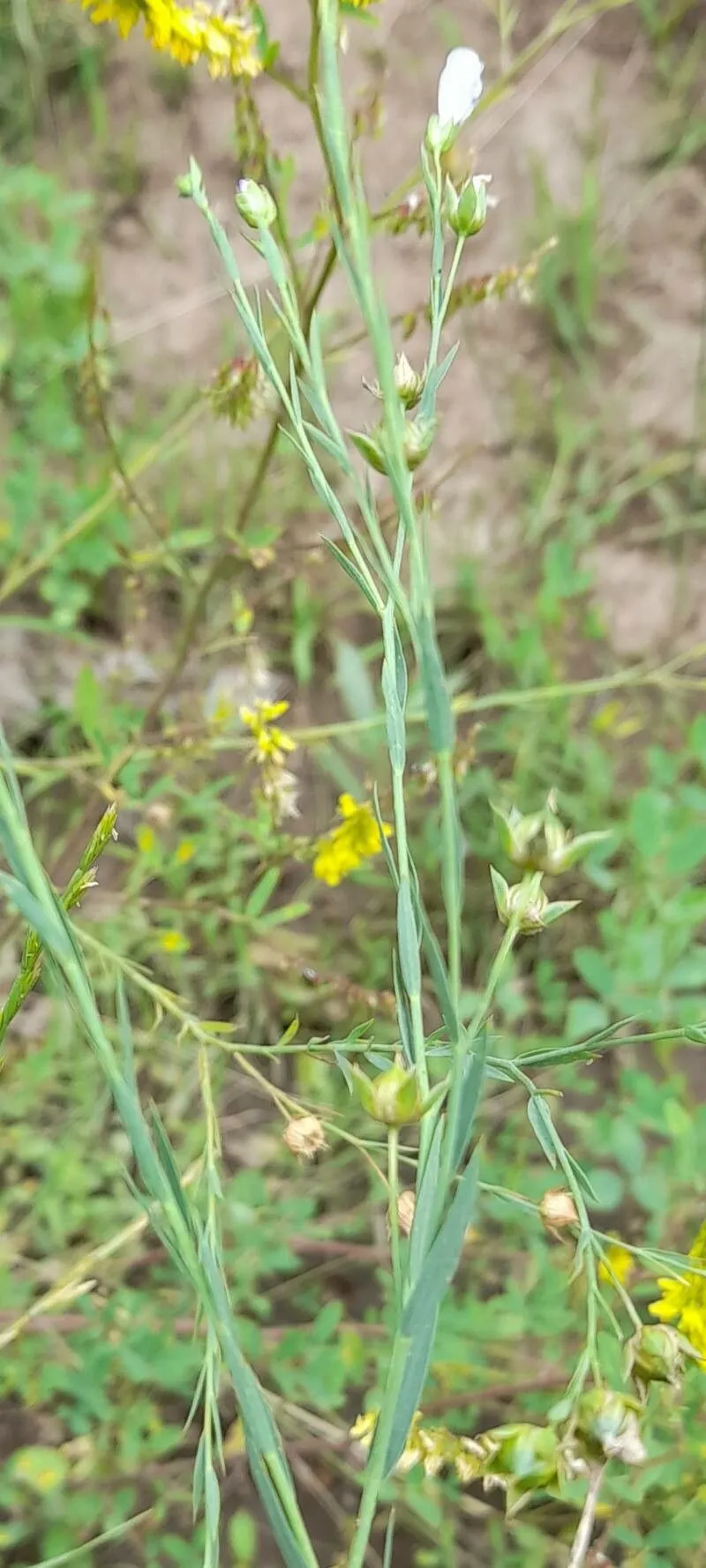
Author: Mill.
Bibliography: Gard. dict. ed. 8: Linum no. 8. 1768
Year: 1768
Status: accepted
Rank: species
Genus: Linum
Vegetable: False
Observations: Macaronesia, W. Europe to Medit. and Iran
Pale flax, scientifically known as Linum bienne, belongs to the Linaceae family and is a versatile plant species found across a range of geographic regions, from Macaronesia and Western Europe to the Mediterranean and Iran. The species was first described in 1768, as noted in the Gardener’s Dictionary (eighth edition), under the section for Linum, entry no. 8, by the author Mill.
This plant’s adaptability is evident from its widespread presence across contrasting climates and terrains. In the regions it inhabits, Pale flax thrives in a variety of soil types and weather conditions, showcasing its resilience and the ecological niches it can occupy. Due to its ability to flourish in diverse environments, Pale flax can be found in both wild and cultivated settings.
The morphology of Linum bienne includes slender, upright stems that support delicate, pale blue to white flowers, which typically bloom in the warmer months. The flowers are not only aesthetically pleasing but also attract a range of pollinators, contributing to the local biodiversity wherever the plant occurs.
Historically, Pale flax has been valued not just for its beauty but also for its practical uses. In some cultures, it has been utilized for its fibers, which can be woven into lightweight fabrics or used in traditional crafting. Moreover, the seeds of Linum bienne are sometimes harvested for their potential health benefits and nutritional value, much like those of the closely related cultivated flax (Linum usitatissimum).
In ecosystems where it is native, Pale flax plays a critical role in supporting insect populations and maintaining soil health. Its presence helps in preventing soil erosion, and its roots engage in symbiotic relationships with soil microorganisms, enhancing soil fertility.
Conservation efforts for Linum bienne focus on preserving its natural habitats, especially in areas where urban development and agricultural expansion threaten its populations. By maintaining healthy ecosystems and encouraging sustainable practices, efforts are made to ensure that Pale flax continues to thrive and contribute to its natural environments.
In summary, Linum bienne, or Pale flax, is a remarkable plant that spans several continents and exhibits impressive adaptability and ecological importance. Its historical uses, delicate beauty, and vital role in ecosystems make it a notable species worth studying and preserving.
Spa: lino blanco
Eng: pale flax
Deu: wild-lein, zweijähriger lein
Nno: fleirårslin
Nob: flerårslin
Nld: tweejarig vlas
Swe: bleklin
Fra: lin bisannuel, lin à feuilles étroites
Cym: llin culddail, llin glan y môr
En: Pale flax
Bg: Зимен лен
Ca: Lli de prat
Nl: Tweejarig vlas, Smalbladig Vlas
Fi: Talvipellava
Fr: Lin bisannuel, Lin à feuilles étroites
De: Wild-Lein, Zweijähriger Lein, Schmalblättriger Lein
He: פשתה צרת-עלים
It: Lino selvatico
Nb: Flerårslin
Nn: Fleirårslin
Fa: کتان کمرنگ
Es: Lino bravo, Lino blanco
Sv: Bleklin
Uk: Льон вузьколистий
Cy: Llin culddail, Llin Glan y Môr
© copyright of the Board of Trustees of the Royal Botanic Gardens, Kew.
© copyright of the Board of Trustees of the Royal Botanic Gardens, Kew.
© copyright of the Board of Trustees of the Royal Botanic Gardens, Kew.
Taken Oct 30, 2022 by Sabina Hartmann (cc-by-sa)
Taken Jun 5, 2014 by Tela Botanica − Mireille HUCK (cc-by-sa)
Taken Nov 21, 2021 by del Rio Diego del Rio (cc-by-sa)
Taken Nov 18, 2021 by Constanza Kuhnert (cc-by-sa)
Taken May 17, 2018 by Linda Lawliss (cc-by-sa)
Taken Jun 13, 2020 by Carracedo Mar (cc-by-sa)
Taken Jan 1, 1900 by EOL − Encyclopedia of Life (cc-by-nc-sa)
Taken Nov 30, 2022 by Trap Hers (cc-by-sa)
Taken Oct 30, 2022 by Sabina Hartmann (cc-by-sa)
Taken Apr 17, 2020 by Scrilli Dudu (cc-by-sa)
Taken Jun 2, 2013 by EOL − snakeinmypocket (cc-by-nc)
Taken Apr 29, 2013 by EOL − Tony Loftin (cc-by-nc)
Taken Dec 17, 2014 by EOL − Colin Meurk (cc-by)
Taken Nov 30, 2022 by Trap Hers (cc-by-sa)
Taken Oct 30, 2022 by Sabina Hartmann (cc-by-sa)
Taken Feb 21, 2020 by Werner Rom (cc-by-sa)
Taken Apr 22, 2018 by Tela Botanica − Patrick Leboulenger (cc-by-sa)
Taken Jan 1, 1900 by EOL − Encyclopedia of Life (cc-by-nc-sa)
Taken Jan 1, 1900 by EOL − Encyclopedia of Life (cc-by-nc-sa)
Taken Feb 20, 2021 by Eleftherios (cc-by-sa)
Taken Mar 30, 2013 by EOL − Valter Jacinto (cc-by-nc-sa)
Taken Jul 25, 2014 by EOL − antje_w (cc-by-nc)
Taken Jan 1, 1900 by EOL − Encyclopedia of Life (cc-by-nc-sa)
Growth habit: Forb/herb
Ph maximum: 7.0
Ph minimum: 6.5
Light: 8
Atmospheric humidity: 5
Soil nutriments: 4
Family: Myrtaceae Author: (F.Muell.) K.D.Hill & L.A.S.Johnson Bibliography: Telopea 6: 402 (1995) Year: 1995 Status:…
Family: Rubiaceae Author: Pierre ex A.Froehner Bibliography: Notizbl. Bot. Gart. Berlin-Dahlem 1: 237 (1897) Year:…
Family: Sapindaceae Author: Koidz. Bibliography: J. Coll. Sci. Imp. Univ. Tokyo 32(1): 38 (1911) Year:…
Family: Asteraceae Author: A.Gray Bibliography: Pacif. Railr. Rep.: 107 (1857) Year: 1857 Status: accepted Rank:…
Family: Fabaceae Author: Medik. Bibliography: Vorles. Churpfälz. Phys.-Ökon. Ges. 2: 398 (1787) Year: 1787 Status:…
Family: Aspleniaceae Author: (Cav.) Alston Bibliography: Bull. Misc. Inform. Kew 1932: 309 (1932) Year: 1932…